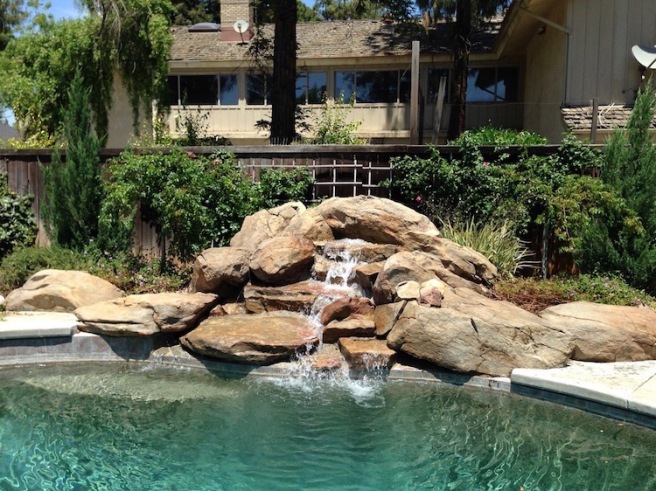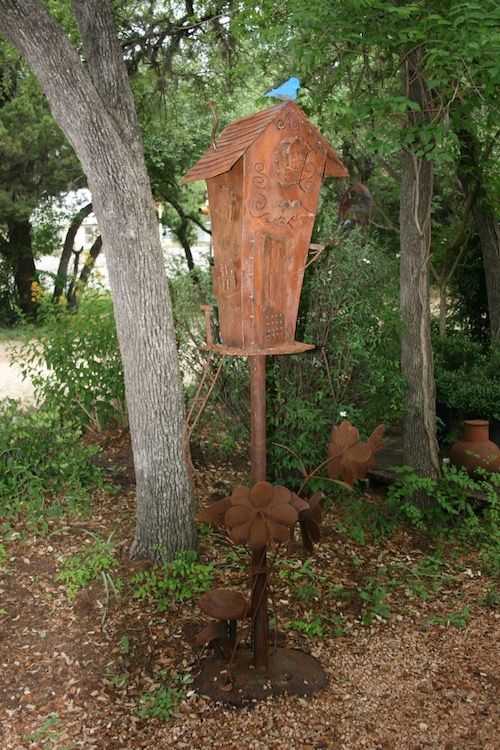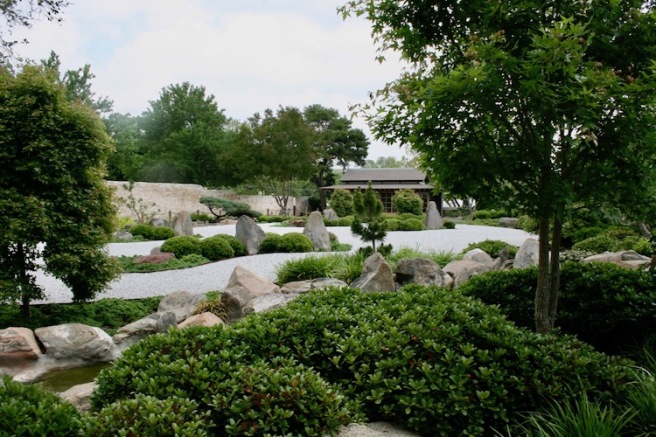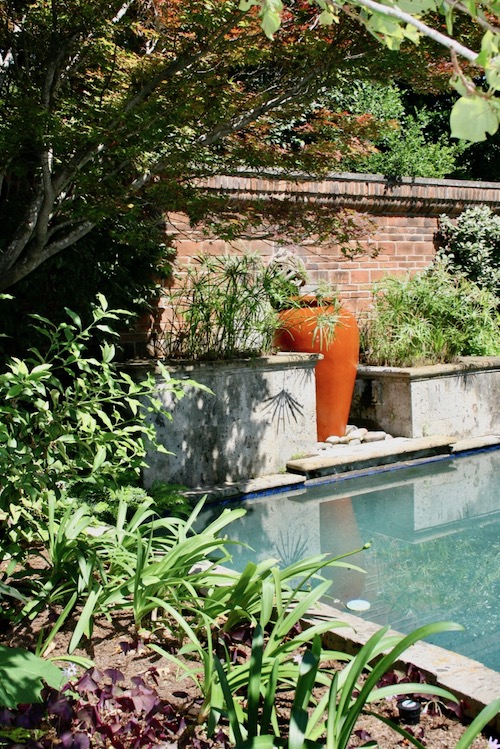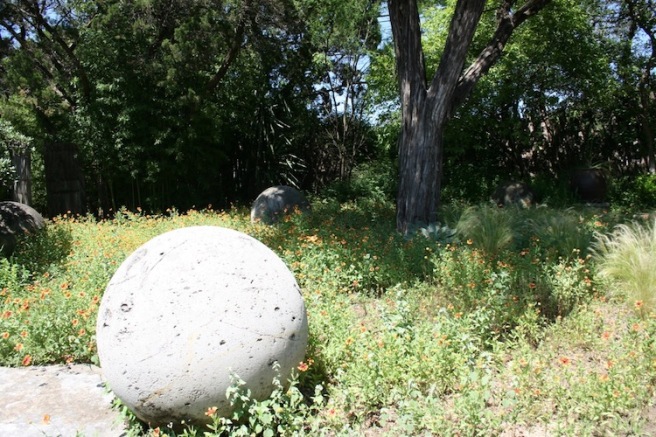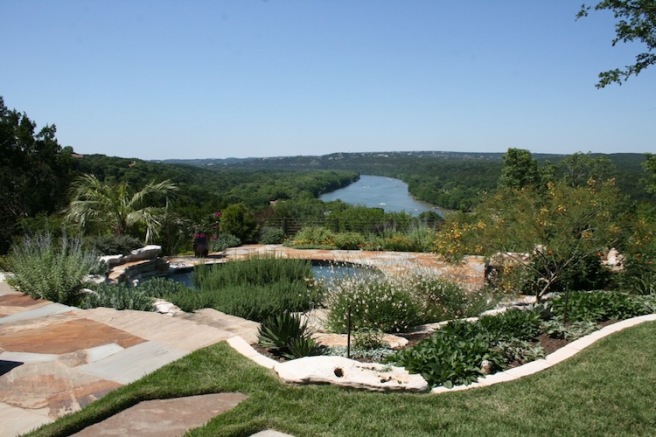On my second adventure day before the start of the Garden Bloggers Fling 2018 I headed west toward Fredericksburg. In my quest to be just a little less structured when I travel I left Austin without a specific itinerary other than to stop by Friendly Natives, a locally owned nursery and landscape business, and stroll the streets of this picturesque Hill Country community founded in 1846 by the Society for the Protection of German Immigrants.
Heading out on Highway 290, it was only a few miles from Austin proper before I had to make a quick U-turn in Dripping Springs to check out the town’s bespoke nursery and garden art gallery Sol’stice owned by landscape designer Christopher Smartt and his mom, Irene Anderson.
My own geriatric Volvo station wagon: hauler of plants, amendments, stone and all other garden related materials, has developed a keen sense of knowing when and how to turn on a dime when someplace off the road calls my gardening name but the shiny new rental car perhaps had not known me long enough to anticipate my desires! This small house on just 3 acres packs in a ton of curb appeal–who could not stop to check out this huge metal guitar? I pulled in right behind mom Irene who invited me to look around while she made a quick trip to the post office.
There is lots of interesting garden art made by owner Chris and other predominantly metal artists. Many of the very large pieces are scattered through a small forest of mature trees to the nursery at the back of the property. The little house, too is chock full of local art in a variety of mediums.

Chris offers full service landscape design and installation focusing on native and waterwise plants. There is a little bit of everything for sale and every plant looks even better in this shaded relaxed setting.


Irene and I chat about mutual garden concerns–woefully inconsistent rainfall et al–and I get the sense Sol’stice offers this mom the great blessing of combining the things she loves most–her son, art and gardening–into a very comfortable life/work existence. I entered through the garden but left through the art gallery and could not help but admire the natural wood posts holding up the door overhang and their whimsical adornments.
If you would like to learn more about this not quite in Austin full service nursery, the yard art and artists represented by the gallery go to their website http://www.solsticegardens.com or check them out on Facebook or Pinterest.
Back on the road to Fredericksburg…

Old pickups never die in nearby Johnson City. This one took on a hip new life as a sign for a sort of industrial chic meets Texas ranch house second hand store.

I also made very quick stop at Wildseed Farms which has been growing fields of wildflowers for the production of seed for over 35 years. There’s a nice nursery operation, lots of interesting structures and a kind of touristy gift shop. Surrounded by open fields the wind was very strong! It was a too late in the season to enjoy vast vistas of colorful wildflowers in bloom but I imagine it is quite a sight in early spring.

There were several pockets of colorful larkspur still going strong within the confines of the garden center area. Wildseed Farms does have an online site at http://www.wildseedfarms.com where you see see their 2018 Wildflower Reference Guide and Seed Catalog to order any of the native grass seeds, wildflower seeds and regional wildflower seed mixes.
Just one more sign drew me off the road before I reached the historic downtown district of Fredericksburg.

It was not until after I returned to the hotel and googled Magnolia Pearl that I found it to be the home of an artisan clothing line composed of vintage fabrics and lace designed by Robin Brown.

Layer upon layer of vintage Texas detail from the historic materials to the historic vehicle marked this 3 story clapboard abode as the perfect setting for an artistic soul to draw inspiration.

Everything but the kitchen sink!
Fredericksburg’s main street was bustling with activity when I arrived at just about lunch time. I turned onto a side street to park and found myself only a few steps from a beautiful gate opening onto a courtyard garden called the Japanese Garden of Peace, a serene garden in the Asian style.

The garden was empty save for one worker who was carefully grooming the plants, clippers and a small bucket in hand. A rake popped against the wall attested to the daily care the gravel requires to keep it looking perfect in every detail.








I learned that this garden is part of the 6 acre complex called the National Museum of the War of the Pacific which includes the Admiral Nimitz Museum. Nimitz was a Texas native and is memorialized in this statue in front of the museum.

The garden was first dedicated and opened to the public in 1976 and then restored and reopened in 2015 and is a lasting symbol of peace and friendship between the two nations. It was an unexpected and delightful find. I would suggest that if you have the chance to visit this garden take time before you go to read about the garden’s history and the symbolism of the individual garden elements–it will add much depth to your experience. Go to http://www.pacificwarmuseum.org for lots of details. I experienced the garden with only a surface understanding of its significance from what I read on the rock plaque–sort of like going in the back door and not seeing the signage at the front where you find out who lives there. Awareness of the history and symbolism serves to increase the garden’s natural beauty.
Seems as though I’ve been on the road all day–still haven’t gotten to my stated destination–Friendly Natives. A little lunch and some Main Street window shopping will have to come first. I’ll leave you with a colorful feast I found in a mercantile selling all manner of fabric and fun things. This is for all you sewers and quilters out there.


NEXT UP: I will take you to Friendly Natives and show you a bit of what owner/designer Matt Kolodzie is up to around town
















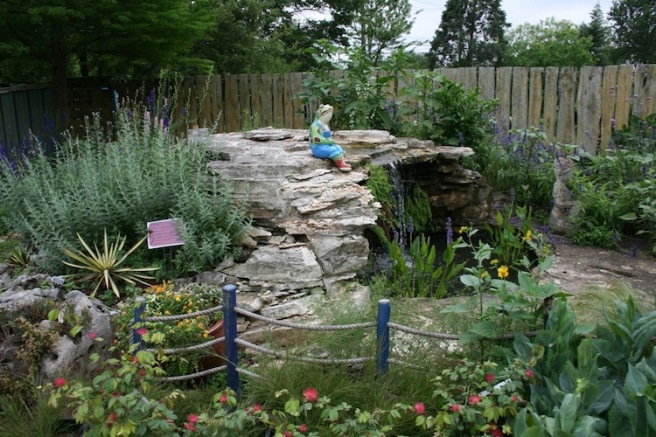




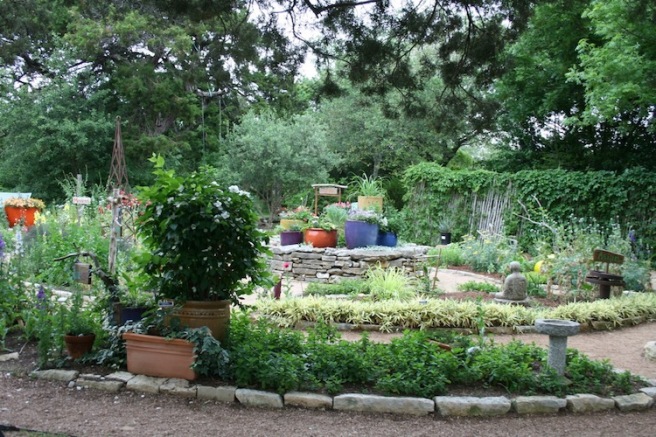














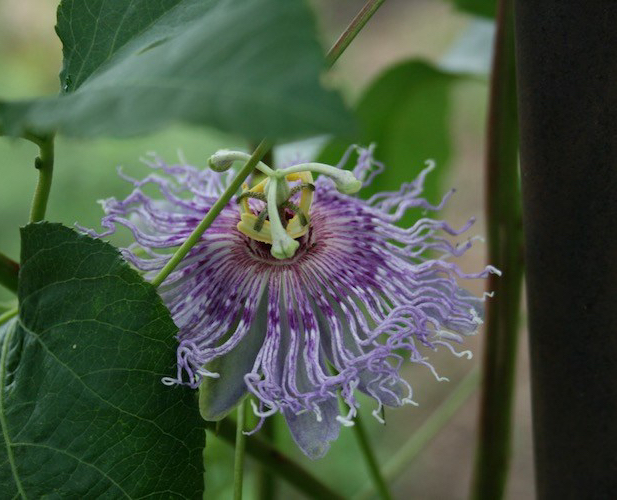































































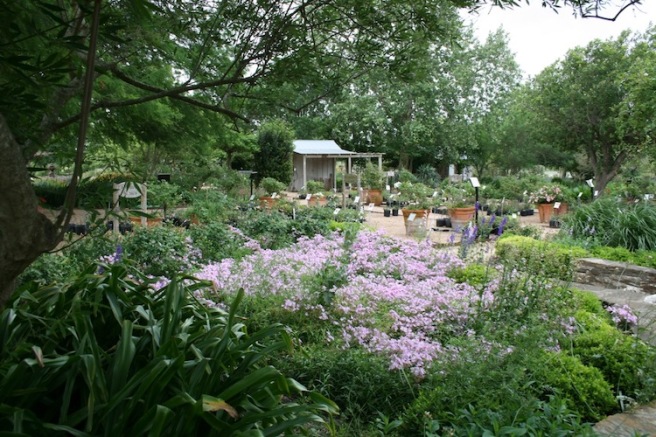





















 The west side is done…now on to the east.
The west side is done…now on to the east.